About the Department
Surgery Department No.1 (ENT, Eye microsurgery) is a part of the surgery service of Medical Center Hospital of the President’s Affairs Administration of the Republic of Kazakhstan and includes two services: ENT and Eye microsurgery.
The Department is located in the new building of the Hospital on the sixth floor, Block A1, and has 25 beds (16 for ENT and 9 for eye microsurgery). The Department is equipped with the latest equipment and has a modern infrastructure. The team of doctors consists of otorhinolaryngologists and ophthalmologists. The list of services covers almost all otorhinolaryngological and ophthalmological areas. Operations are performed at the expense of the republican quota and on a paid basis.
Services of the Department
ENT specialists of the Department provide a wide range of diagnostics, operative and conservative treatment of topical ENT problems for the population of our country.
Operating room is equipped with the latest equipment and includes the Carl Zeiss operating microscope, endoscopic video system, and Carl Storz navigation system, Deca operating laser. All this makes it possible to perform unique operations on ENT organs in a minimally invasive, highly effective and, most importantly, safe for patients.
The main clinical areas of the Department are:
Rhinosurgery
- FESS - Functional Endoscopic Sinus Surgery (maxillary, frontal, ethmoidal and sphenoid sinuses) is performed using rigid endoscopes with different viewing angles of 00, 300, 450, 900 1200 and a video stand with an HD monitor, as well as a microdibrider (shaver), which allows visually to monitor the operation process on the screen with high accuracy. The advantage of such operations is minor invasiveness, high efficiency, which leads to a faster recovery of patients. Indications for such surgeries are acute and chronic inflammation, foreign bodies, cysts and mucocele of the maxillary sinus cavity, polypous sinusitis and recurrent nosebleeds.
- Septoplasty is a surgery aimed at correcting the deformation of the nasal septum, which is clinically manifested by a violation of nasal breathing. Endoscopic control is also used when performing septoplasty, with maximum preservation of the parts of the nasal septum that are not involved in the deformation, which minimizes such consequences of septoplasty as perforation.
- Turbinoplasty is a surgical intervention aimed at correcting the shape of the lower nasal conchae, which may be enlarged in volume or polypous-altered. It is carried out using a radiofrequency knife that minimizes the impact on the mucous membrane of the conchae.
Otosurgery
- Hearing-enhancing and hearing-preserving operations on the middle ear cavity (tympanoplasty type I, II, III, IV and V, stapedoplasty, ossiculoplasty, antromastoidectomy). The use of Carl Zeiss modern operating microscope allows very precise manipulation on the finest structures of the tympanic cavity.
- Pharyngeal and laryngeal surgery.
- Laryngeal microsurgery using surgical laryngoscopes, microscopes, and micro-instruments for benign laryngeal neoplasms.
- Microsurgery of the larynx using an operating laser for bilateral paresis of the vocal ligaments, benign neoplasms of the larynx.
- Reconstructive surgery of the pharynx and larynx for apnea and snoring.
- Tonsillectomy is classical coblator (“cold plasma”) with the help of “cold” instruments. The use of a coblator, a tool with the effect of “cold cutting”, minimizes bleeding and reduces the recovery period after surgery.
- Adenotomy using a shaver.
Ophthalmological Service of Medical Center Hospital of the President’s Affairs Administration of the Republic of Kazakhstan is represented by 10 doctors of the first and highest category and is headed by Madina Kurmangaliyeva, Doctor of Medical Sciences. The service has 6 inpatient beds in the Surgery Department No.1, 5 daycare beds and offices of ophthalmologists in 3 blocks of the outpatient department (preventive, consulting-diagnostic and paid outpatient departments).
High level of diagnostics is provided by the professional work of ophthalmologists on the latest equipment from modern models of tonometers, computer perimeters, refractometers to optical coherence tomographs, ultrasound and laser biometers.
Eye surgeries are mainly cataract and glaucoma surgeries. Cataract surgery is performed by phacoemulsification, which is the “gold standard” in modern ophthalmology, by Madina Kurmangaliyeva, Madina Mambetova and Aliya Dzhalmagambetova, who have been trained in leading clinics of the country and abroad. Surgeries are performed on the most modern equipment – the Infiniti microsurgical system, the Lumera microscope with the use of “soft” intraocular lenses and consumables from the world’s leading manufacturers. It should be particularly noted that the ophthalmological operating room is equipped with laminar ventilation flows, which allow to guarantee the epidemiological safety of operations. Placement of ophthalmic surgery in a multidisciplinary clinic allows, if necessary, in the presence of concomitant general diseases, to conduct additional examinations and consultations of patients.
Currently, the treatment of cataracts is available in our Hospital not only in the inpatient department, but also in the outpatient department according to the direction of city polyclinic doctors.
The Hospital pays special attention to the diagnosis and treatment of glaucoma. We have many opportunities to do this. Examination of the patient for glaucoma at the modern level with the use of pachymetry, Pascal tonometry, computer tonometry, etc. allows for early diagnosis of this insidious disease, which is one of the main causes of irreversible blindness and low vision in economically developed countries.
The ophthalmologist selects hypotensive drops when glaucoma is detected in order to achieve the target intraocular pressure. In addition, if they are ineffective, we perform laser and microsurgical hypotensive operations. The Hospital has successfully implemented operations with the use of glaucoma drains, which are necessary for repeated operations.
New direction in the treatment of patients with vascular malformations of the eye is the use of anti-angiogenic agents, which can successfully combat edema of the macular zone of the retina, which is responsible for central vision. This treatment can be effective in patients with age-related macular degeneration, diabetic retinopathy, etc.
Cycloscopy - examination of the periphery of the fundus, as well as laser operations – retinal coagulation, iridotomy, secondary cataract dissection are also performed.
The placement of the department in a multidisciplinary clinic allows, if necessary, in the presence of concomitant general diseases, to conduct additional examinations and consultations of patients.
Doctors of the Department
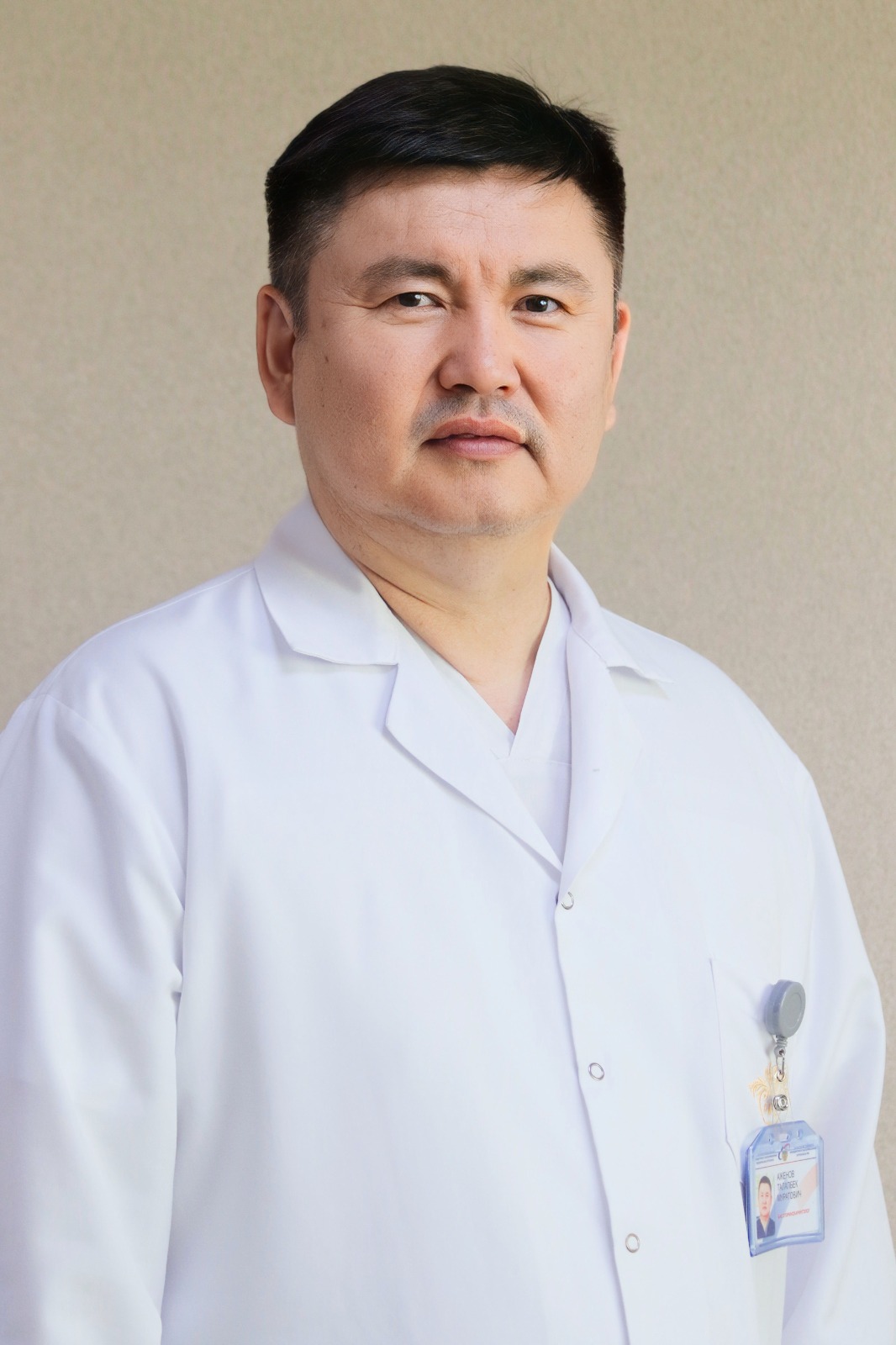 Talapbek Azhenov
Talapbek Azhenov
Chief otorhinolaryngologist
Doctor of Medical Sciences
The Highest Category
Work experience: 25 years
Arman Nagumanov
Chief of the Department
The Highest Category
Work experience: 20 years
Gulfairus Moldasheva
Ophthalmologist
The Highest Category
Work experience: 32 years
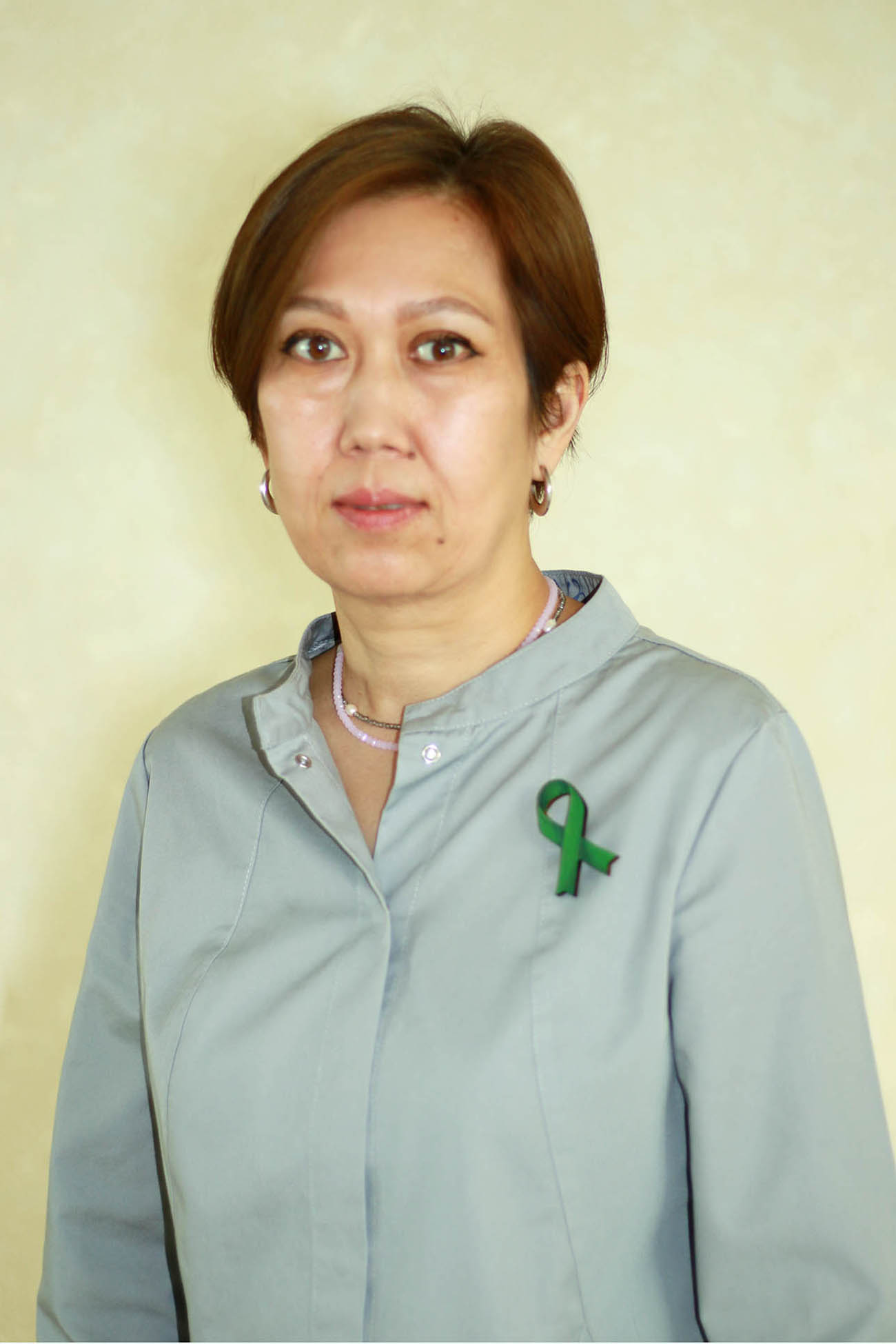 Madina Kurmangaliyeva
Madina Kurmangaliyeva
Chief Ophthalmologist
Doctor of Medical Sciences
The Highest Category
Work experience: 30 years
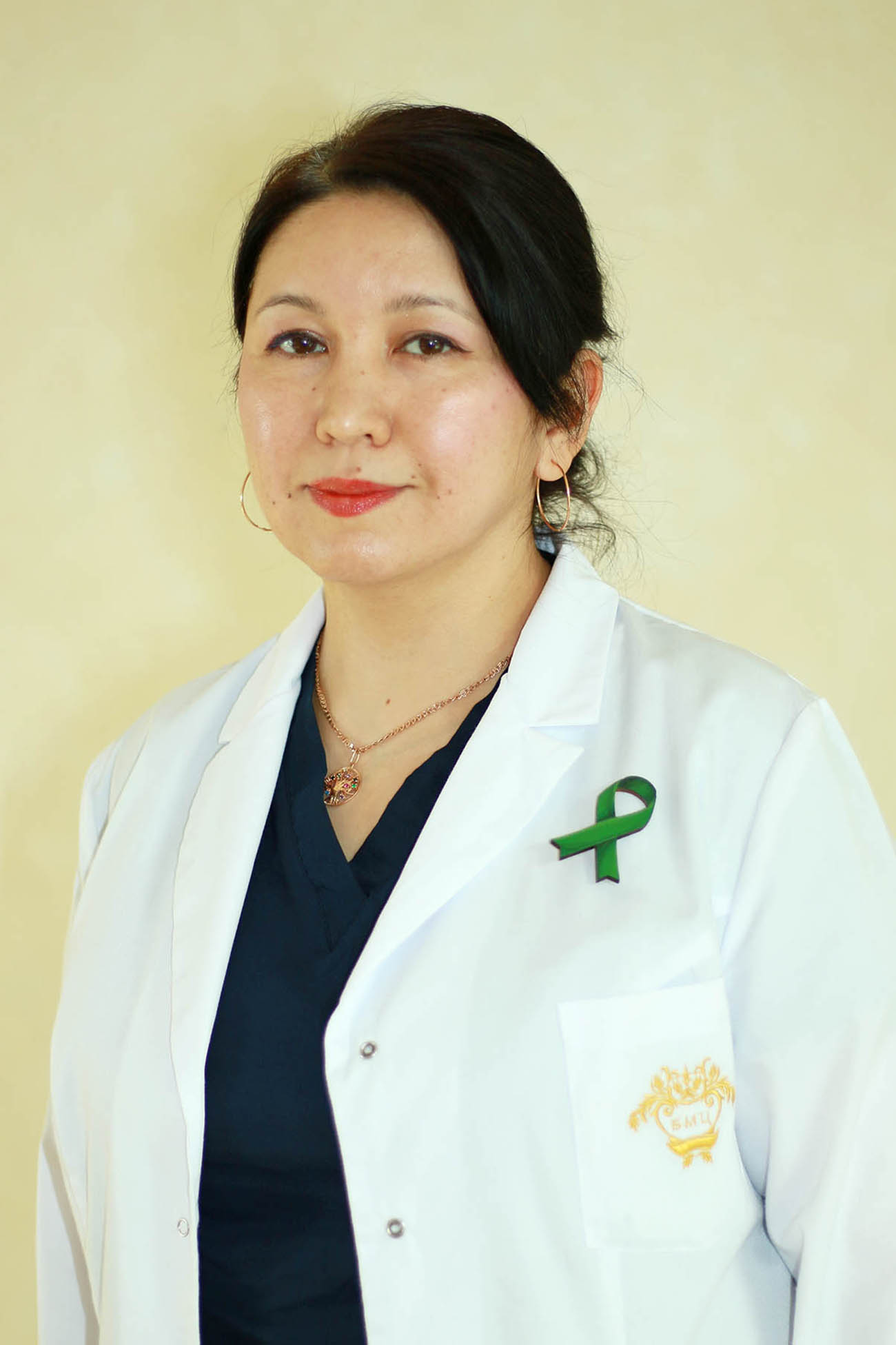
Aliya Dzhalmagambetova
Ophthalmologist
The Highest Category
Work experience: 25 years
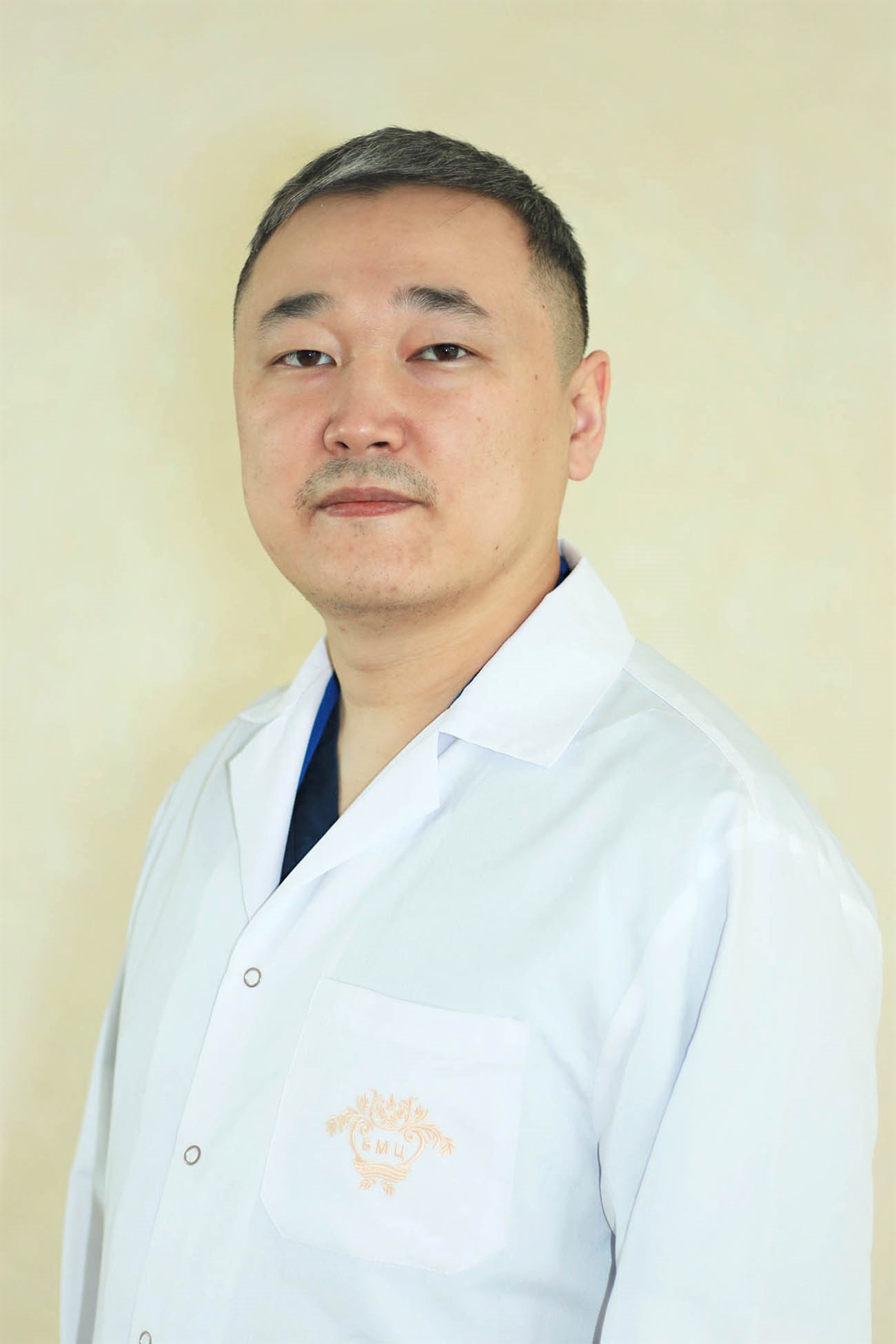 Dmitryi Kogay
Dmitryi Kogay
ENT specialist
The Highest Category
Work experience: 15 years
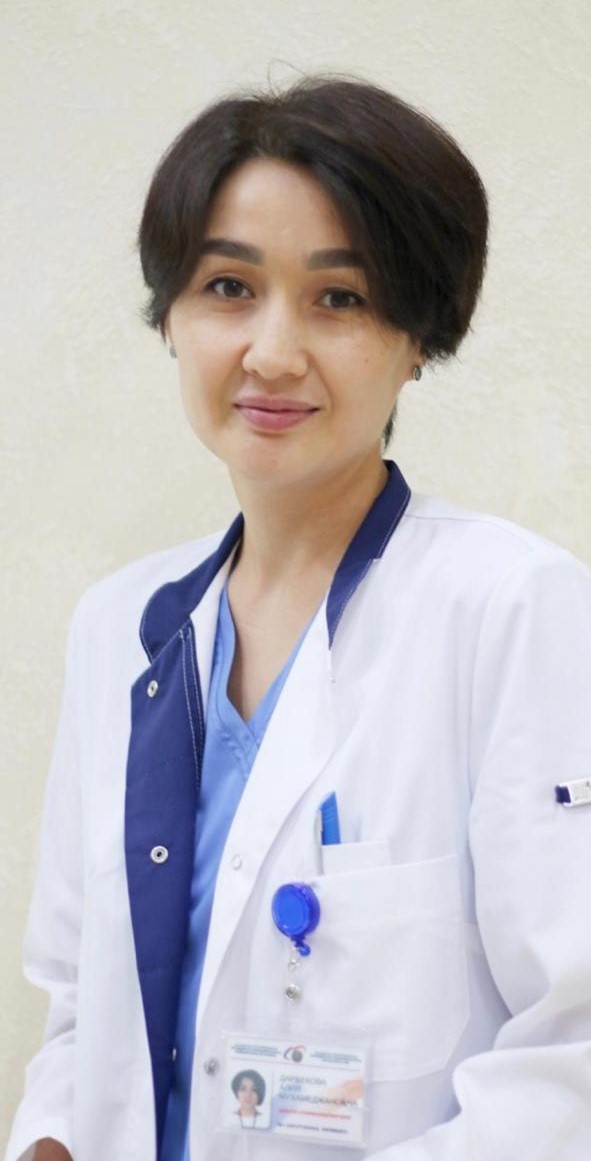 Aliya Darbekova
Aliya Darbekova
ENT specialist
The First Category
Work experience: 15 years
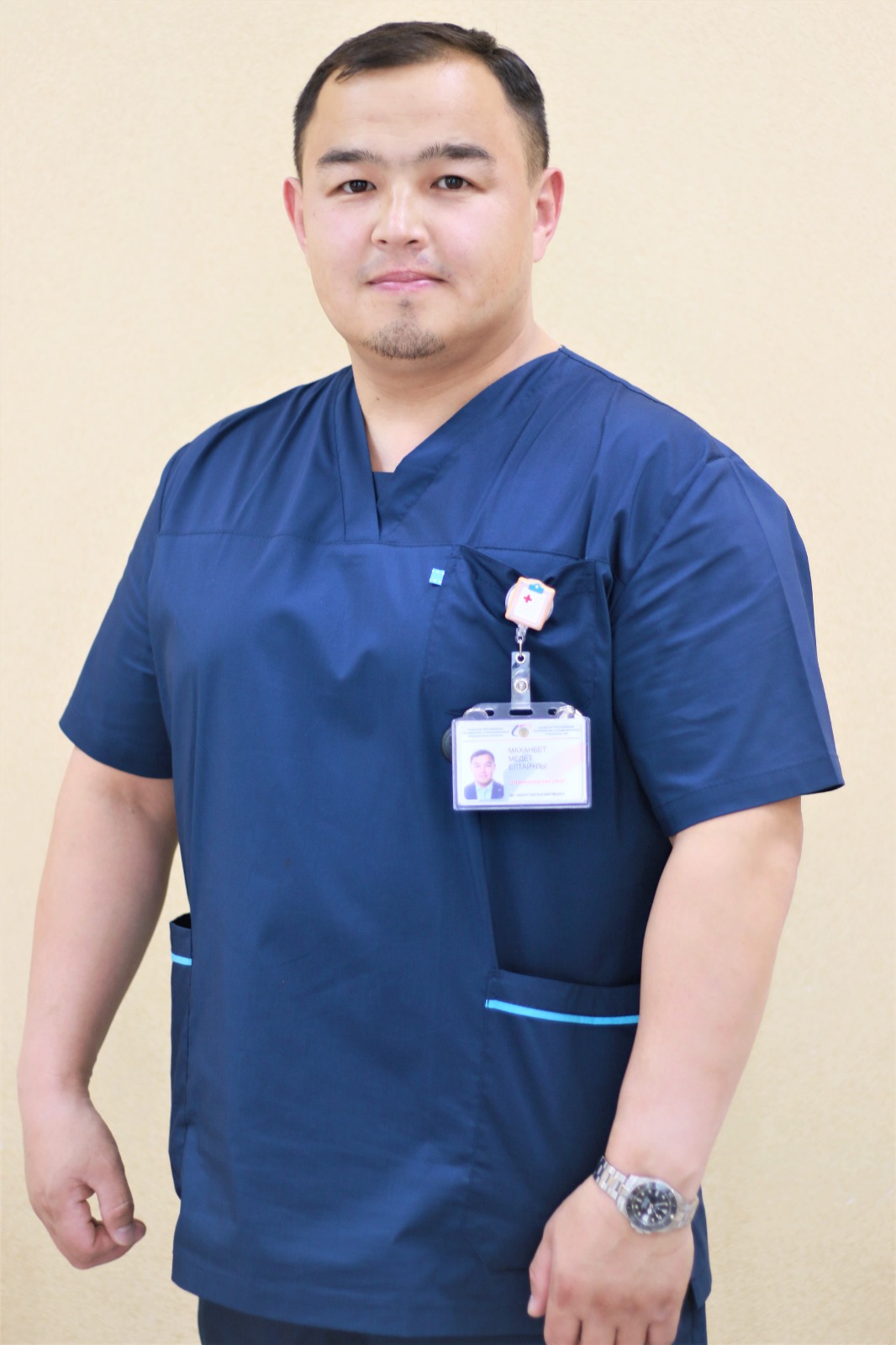
Mahanbet Medet
ENT specialist
The Highest Category
Work experience: 13 years



